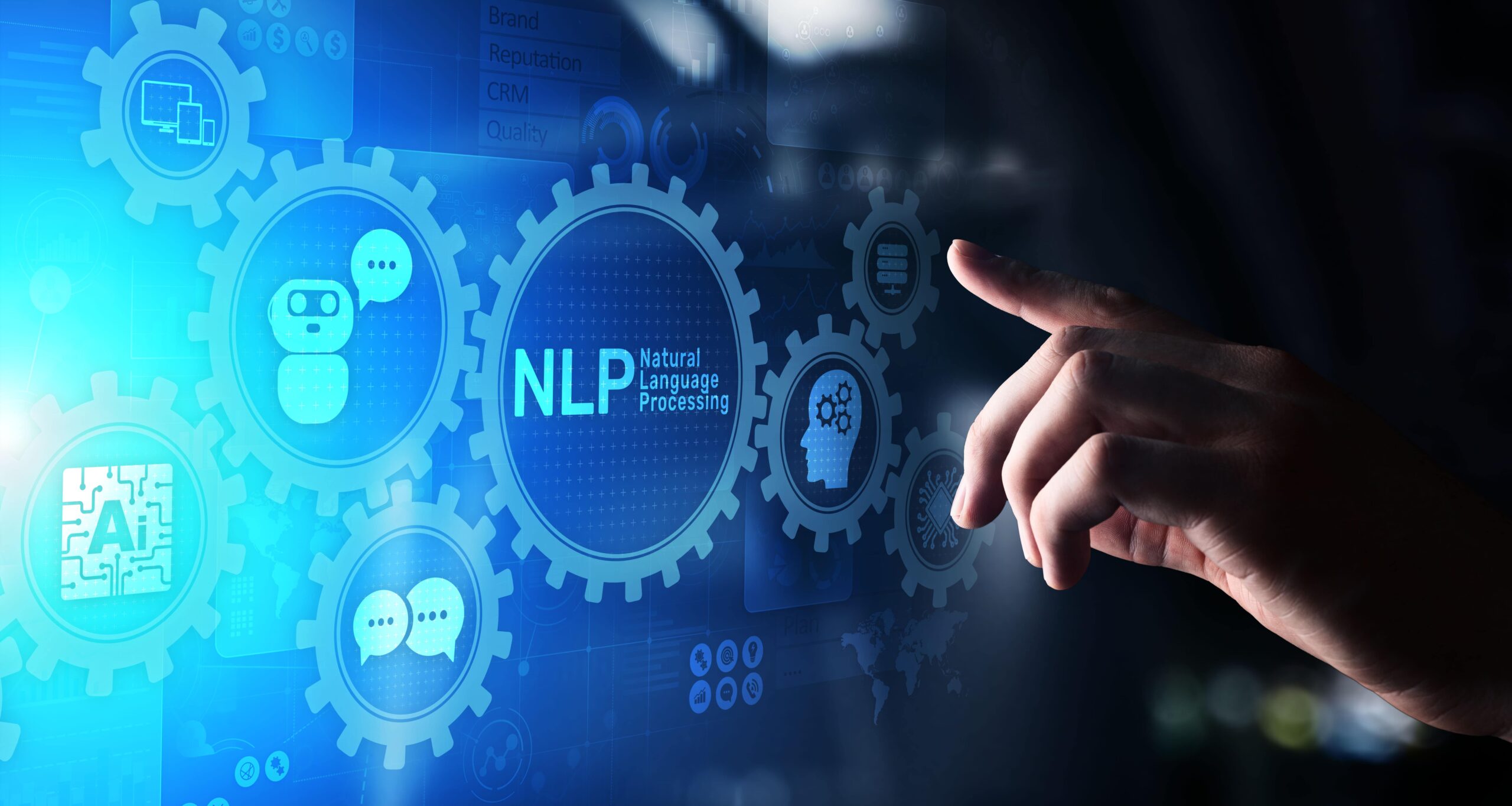Natural Language Processing (NLP) has revolutionised how search engines work, making them more intuitive, accurate, and user-friendly. From Siri to Alexa, and more recently with ChatGPT, NLP is powering the technology that allows us to communicate with machines more naturally and intuitively. In recent years, enterprise systems have also increasingly adopted NLP to improve communication, automate tasks, and gain insights from data. In the leasing and asset finance industry, the use of NLP-based search engines can be particularly advantageous, given the complexity of the domain-specific language used in this field. In this article, we will explain what NLP is, how it works, and why it is particularly relevant in the leasing and asset finance industry.
What is Natural Language Processing
Natural Language Processing (NLP) had its roots in the 1950s when researchers began experimenting with machine translation. Over the years, researchers have developed increasingly sophisticated algorithms and techniques for processing human language. However, it was only with the advent of deep learning and neural networks in the 2010s that NLP began to reach its full potential.
NLP is a branch of artificial intelligence that focuses on the interaction between human language and computers. It involves using algorithms and statistical models to enable computers to understand, interpret, and generate human language. In essence, NLP aims to bridge the gap between human and machine language, allowing computers to process, analyse, and respond to natural language inputs meaningfully.
It involves using various techniques and algorithms to enable machines to understand human language. The process begins by breaking down human language into smaller components, such as words and phrases. These components are then analysed to determine their meaning and relationship to each other. NLP algorithms then use this information to generate responses or perform specific tasks. One of the critical components of NLP is machine learning, which allows machines to learn and improve their performance over time. Machine learning algorithms enable devices to identify patterns in human language and use these patterns to enhance their ability to understand and respond to human language.
We can see examples of NLP in action today in our daily life, in how Siri and Alexa use NLP to interpret voice commands and perform various tasks, Google Translate uses NLP to translate text from one language to another and more recently with ChatGPT, AI chatbot developed by OpenAI, that uses NLP to understand and respond to human language.

How Does Natural Language Processing Work?
NLP breaks down natural language inputs into smaller, more manageable units, such as words, phrases, and sentences. It then uses statistical models and algorithms to analyse these units, identifying patterns, relationships, and meaning. Some of the fundamental techniques used in NLP include:
Tokenisation involves breaking down a text into words, phrases, or sentences. This technique is important for many NLP tasks, such as part-of-speech tagging and sentiment analysis, as it enables the computer to identify the boundaries between different language units.
Part-of-speech tagging involves labelling each word in a sentence with its grammatical categories, such as noun, verb, adjective, or adverb. This technique helps identify the syntactic structure of a sentence, which can help to disambiguate its meaning.
Named entity recognition involves identifying and categorising named entities in a text, such as people, organisations, locations, and dates. This technique is essential for many NLP tasks, such as information extraction and entity linking.
Sentiment analysis involves determining the emotional tone of a piece of text, such as whether it is positive, negative, or neutral. This technique is helpful for many applications like social media monitoring and customer feedback analysis.
Parsing involves analysing the grammatical structure of a sentence to determine its meaning. This technique is essential for many NLP tasks, such as machine translation and text-to-speech synthesis.
How Are Businesses Using Natural Language Processing?
In the same way, we see how NLP has impacted our daily lives with Google Assistant or Amazon Alexa performing a wide range of tasks for us, including setting reminders, sending messages, answering questions, playing music, and controlling smart home devices, NLP has become increasingly popular in business applications. According to recent research, the global NLP market size in 2022 stood at USD 15.7 billion and is expected to grow significantly, reaching USD 144.9 billion by 2032 for its diverse and unique applications.
Here are a few examples of NLP used in business applications:
Oracle Digital Assistant is a cloud-based conversational AI platform that uses natural language processing (NLP) to enable users to interact with enterprise applications, such as ERP and CRM systems, websites, and databases using natural language. The platform uses machine learning algorithms to understand the intent behind a user’s question or statement and responds with the appropriate action or information. It uses a variety of NLP techniques, including entity recognition, sentiment analysis, and language understanding, allowing businesses to provide personalised and contextualised experiences. For example, a customer may ask a question about their order status, and the Oracle Digital Assistant can use NLP to understand the customer’s intent and provide a response that is specific to that customer’s order. This can help improve customer satisfaction and reduce the workload on customer service staff.
Salesforce Einstein is an NLP-powered system that uses natural language processing and machine learning to analyse customer data and provide insights. Einstein is integrated into Salesforce’s customer relationship management (CRM) platform and provides users with a range of features, including predictive analytics, sentiment analysis, and chatbots. Like with Oracle, one way that Einstein uses NLP is through sentiment analysis to help businesses understand how customers feel about their products or services. It also uses NLP to develop predictive models that can help businesses anticipate customer needs and behaviour. For example, Einstein can analyse past customer interactions and identify patterns that may indicate a customer is likely to make a purchase or churn. This information can be used to develop targeted marketing campaigns or to identify at-risk customers and take steps to retain them.
Microsoft Azure provides a range of AI and machine learning services, including Apache OpenNLP, which is an open-source NLP library. OpenNLP is designed to process natural language text, such as identifying named entities, recognising sentence boundaries, and identifying parts of speech. Through its Cognitive Services suite, which includes the Language Understanding Intelligent Service (LUIS) and the Text Analytics API, developers build conversational bots and natural language interfaces for their applications.
All these business applications enable companies to leverage NLP to automate tasks, improve communication, and gain insights from data. The financial services sector uses NLP-powered chatbots to help customers apply for loans or answer basic account questions, reducing costs and improving the overall customer experience.

Another way that businesses leverage NLP is through sentiment analysis. By analysing customer feedback and social media posts, companies can gain insights into customer sentiment and identify areas for improvement.
Companies also use NLP to analyse large amounts of text data, such as customer reviews or social media posts, to identify patterns and trends. This information is then used for product development or marketing strategies. Additionally, NLP can generate natural language reports or summaries based on data analysis, saving time and improving efficiency.
NLP has become a critical tool for businesses across various industries for Process Automation. The leasing and asset finance industry is no exception. Let’s look at some specific examples of the potential use of NLP in this industry.
NLP can be applied to automate processes, improve efficiency, and reduce risk. One significant use of NLP is for credit risk assessment. By analysing a wide range of unstructured data such as news articles, financial reports, and social media feeds, NLP can help lenders make better-informed lending decisions.
For contract management, NLP can help automate the process. NLP algorithms can identify key clauses, provisions, and obligations in contracts, enabling leasing companies to extract relevant data quickly and accurately from contracts. This can help reduce manual errors, improve efficiency, and reduce risk.
Another application of NLP in the leasing and asset finance industry is invoice processing. NLP algorithms can automatically extract data from invoices and match it with contract data, reducing manual data entry errors and speeding up invoice processing times.
NLP is currently used in the financial service industry for fraud detection, where it analyses large volumes of data from various sources, such as social media, news articles, and financial reports to identify patterns that may indicate fraud. This information can be used to develop fraud detection models to help leasing companies detect and prevent fraud.

Finally, NLP-powered chatbots can improve customer service in the leasing and asset finance industry. Chatbots can provide customers with information on their accounts, help them make payments, and answer frequently asked questions, improving customer satisfaction while reducing the workload on customer service staff.
The use of NLP has numerous benefits for businesses, from improving communication and customer service to automating tasks and gaining valuable insights from data. However, there are also challenges associated with using NLP. One major challenge is data quality. NLP algorithms rely on large amounts of high-quality data to train models and make accurate predictions. If the data is biased, incomplete, or inaccurate, the resulting models may not be effective. Additionally, NLP algorithms can be expensive as they require significant computing resources to run effectively. Another challenge is the complexity of natural language. Human language is nuanced and context-dependent, which can make it difficult for computers to accurately process and understand. Additionally, natural language can be highly subjective, which can make sentiment analysis and other NLP applications challenging. Despite these challenges, NLP is a powerful tool that is becoming increasingly important in the modern business world, and its applications are likely to continue expanding in the future.
Sources:
https://www.salesforce.com/products/einstein/ai-research/natural-language-processing-single-model/
https://www.techtarget.com/searchenterpriseai/definition/natural-language-processing-NLP
https://cs.stanford.edu/people/eroberts/courses/soco/projects/2004-05/nlp/overview_history.html






